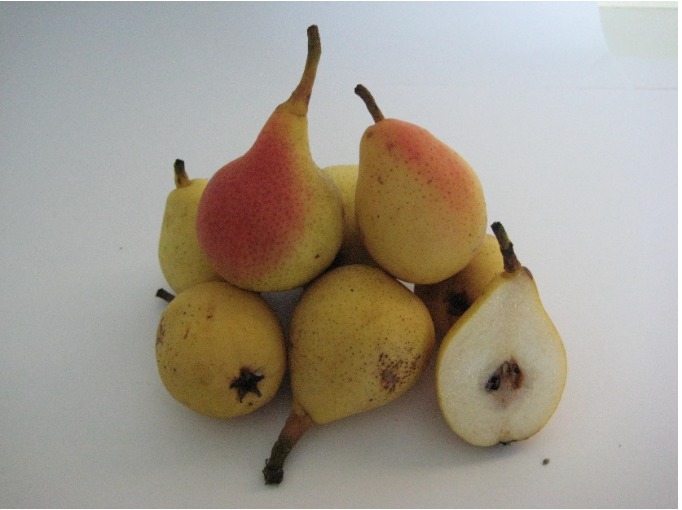Crop: Pyrus communis L. (Pear)
Angelica is very old and cultivated at least from renaissance period. U. Aldrovandi wrote about Pera Angelica in the second part of XVI century. In this period it was already known in many parts of Italy with different names.
Some farmers continued to grow it until now. Angelica fruits ripen in September, have good size, typical long pear shape, skin is green coloured with beautiful red in the more sunning part. Taste is good and recognisable; it is characterised by melting flesh and very fine, juicy with intense aroma at two month and half after harvest. It is possible to store in refrigerated conditions until the end of November.
Cultivation System: conventional conditions.
Geographical Information
Country: Italy
In the past centuries, Angelica was cultivated in many parts of Italy; from the north (Lombardia, Veneto) to the center (mainly Marche). In the region Emilia Romagna was cultivated in the provices of Modena and Bologna and also in the geographical area of ‘Romagna’.
It is still planted in many amateur orchards and gardens, but, nowadays, the most important production area is still in Romagna, around Bagnacavallo and Rimini, and in the Marche Region, in Serrugarina. It is possible to grow Angelica using modern orchard arrangements like medium (4,5 x 2m) to relatively high density. However, the use of central axis training systems make Pera Angelica less sensitive to diseases than commercial varieties, so it is also cultivated under organic conditions. Productivity is good but it is better not to reach maximum values because quality could decrease significantly.
Farmer(s) description:
Angelica is vegetative propagated variety. In the last years some nursery decided to select virus free clones and a complex index and lab control activity is carrying on. Nowadays nursery have mother trees stock where they start to propagated material to do new trees and new orchard. In mother trees stock it is possible to control also fruit trueness to type before propagation in nursery.
Propagation system: Clonal
Multiplication procedures and consequences on landrace diversity:Angelica is vegetative propagated. In the last years, some nurseries decided to select virus free clones using a complex indexing method together with laboratory analyses. Nowadays nursery have mother trees stock where they start propagating material. Mother trees allow to also to check fruit trueness to type before propagation
Management plan existence:ND.
Added Values
In the last years Angelica fruits demand is increasing a lot for some reasons: pear varieties in the market are very few and conumers need something different. Fruit Quality of is very high level and that is appreciate a lot. Demand of local varieties is increasing and not only on farm direct sale but also is supermarkets trends.
Others (e.g. commercial/geographical brands or special traits):Pera Angelica has been included into the regional register of local genetic resources of Emilia Romagna.
‘Regional agrobiodiversity law (N.1/2008) should ensure ‘guardian farmers’ subsidies to maintain trees of varieties included in regional register. Since the production area is quite large compared to other fruit landraces, access to such found resulted difficult in the past.
The case study has been provided Centro Ricerche Produzioni Vegetali (CRPV), Cesena (Italy).
Information were also communicated by Claudio Buscaroli, CRPV.
A special thanks to the members of Rosa Romana Association (Associazione Rosmana).
- Autori vari (2018) Atlante dei fruttiferi autoctoni italiana. Ed Mipaf-Crea
- Buscaroli C., (2015). Varietà autoctone di pero, promossa iniziativa di salvaguardia. Frutticoltura n.9: 55-56
- Gallesio G., (1810) Pomona
- Sansavini S., Ravaglia GF (1992). Il germoplasma del pero in Emilia Romagna. Atti Congresso ‘Germoplasma frutticolo, salvaguardia e valorizzazione delle risorse genetiche. Alghero 21-25 settembre
